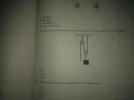exNavyOffRec
Well-Known Member
Took the ASTB for the first time last week and got 7/6/8 OAR:61. I had a study book but I didn't spend that much time reviewing the aviation knowledge, which was the hardest section for me. I felt the reading comprehension and math were very easy and I probably got nearly all of them correct. Does the FOFAR score weight the reading/math more heavily and the PFAR weight the aviation stuff more? That would seem to make sense. I'm going to study the FAA handbook a lot and retake it in a month to get my PFAR score up.
The math, reading, mech comp all go to the OAR


